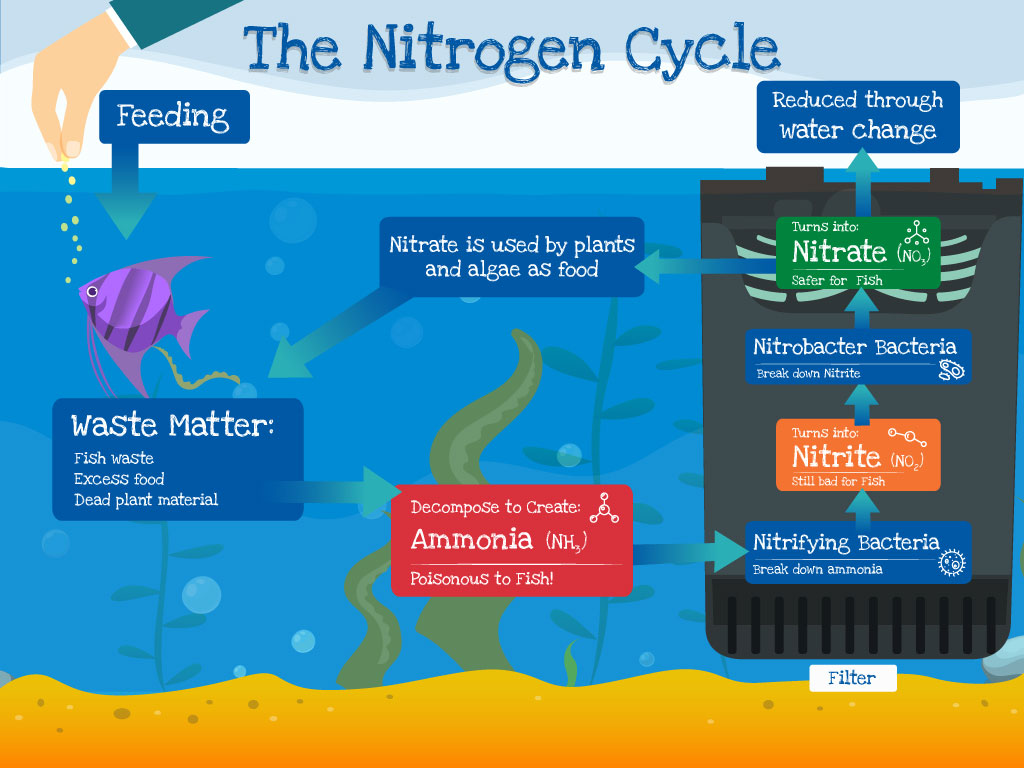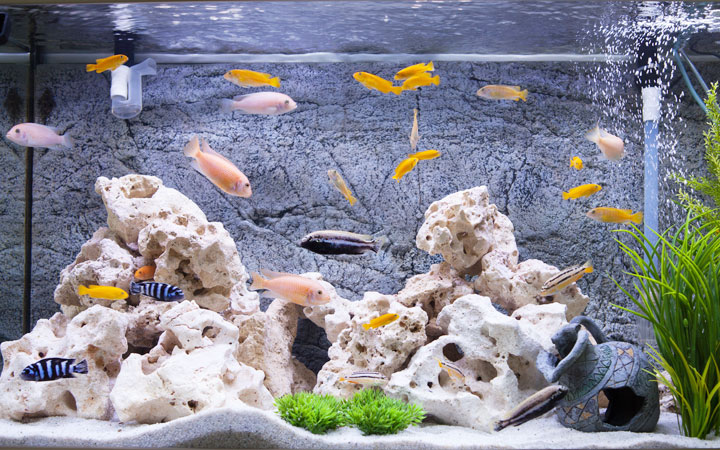Aquarium Nitrogen Cycle: Understanding the Biological Process of Your Tank’s Health
If you’re a new aquarium owner or planning to set up a tank, it’s important to understand the aquarium nitrogen cycle. This biological process is essential to the health of your tank’s inhabitants and the overall balance of your aquarium ecosystem.
The nitrogen cycle is the process by which organic waste in the tank is broken down into less harmful substances by beneficial bacteria. These bacteria, known as nitrifying bacteria, convert toxic ammonia produced by fish waste, decaying food, and other organic matter into nitrite and then into nitrate. Nitrate is relatively harmless to aquatic life in small amounts and can be removed through regular water changes or by incorporating live plants that absorb it.
The aquarium nitrogen cycle consists of three primary stages: the ammonia stage, the nitrite stage, and the nitrate stage.
- The Ammonia Stage
In the ammonia stage, waste products such as fish excrement, uneaten food, and decaying plant matter produce ammonia. Ammonia is highly toxic to fish and can quickly lead to illness or death if not removed from the water.
Fortunately, beneficial bacteria called Nitrosomonas convert ammonia into nitrite, which is less toxic but still harmful to fish.
- The Nitrite Stage
During the nitrite stage, Nitrobacter bacteria convert the nitrite into nitrate. Nitrite levels should be monitored closely, and water changes may be necessary to keep them within safe levels for fish.
- The Nitrate Stage
In the nitrate stage, nitrate is produced as the final product of the nitrogen cycle. Nitrate levels should also be monitored, and water changes can be performed to keep them at safe levels. Additionally, plants can be added to the tank to absorb nitrates and provide additional benefits such as oxygen production.
It’s important to note that the nitrogen cycle is a continuous process, and beneficial bacteria must be present in the tank to maintain a healthy environment for your aquatic pets. It’s also important to avoid overfeeding and overcrowding your tank, as excess waste can overload the beneficial bacteria and lead to harmful ammonia spikes.
In summary, understanding the aquarium nitrogen cycle is essential to the health of your tank’s inhabitants. Regular monitoring of water quality and performing water changes as needed are critical components of maintaining a healthy aquarium ecosystem. By taking the time to understand and maintain the nitrogen cycle, you can provide a safe and healthy home for your aquatic pets.
![]()




